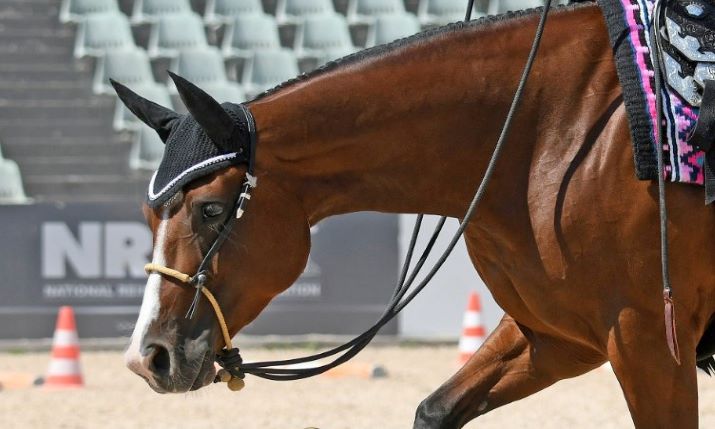Building blocks: AJA on what 2023 could signal for the future of live sports production
 By Nick Rashby, AJA president.
By Nick Rashby, AJA president.
Sports broadcast has come a long way since the first televised sports match in 1939 in the United States, which saw Columbia go head-to-head with Princeton in an exciting baseball match. The game was captured in black and white with a single camera and broadcast by NBC to about 400 television sets. In stark contrast, coverage of the big soccer championship in 2022 was broadcast and streamed to a global audience of more than 5 billion people across multiple viewing platforms and device types, and in some cases, in 4K HDR.
Technological innovation continues to up the ante for live sports coverage, taking the fan experience to new heights, and 2023 was no exception. The rapid advancement of production gear and techniques – from virtual and remote production to cinema and drone camera technology, video over IP and ultra-low latency tools – made 2023 an evolutionary year. New developments in streaming and mobile production also helped make live sports production more accessible to smaller, more niche sports.
Hollywood’s influence on sports storytelling
From ESPN to Fox, we saw major virtual production innovations from sports broadcasters this past year. More shows integrated the LED walls we’re seeing on film and TV production sets into their studios and found ways to make their live coverage more immersive – a significant upgrade from the static displays that previously sat behind talent. Massive LED walls now showcase replays or footage for illustrative purposes, and graphics can be dynamically swapped in and out to change the show branding or environment. It’s making sports productions a lot more flexible and cost-efficient, as well as entertaining for audiences. Experimentation with virtual production technology is still relatively new in the space, so it will be interesting to see how it takes shape.
In 2023, we also saw ‘cinelive’ gain traction, as more sports productions leveraged cinematography gear and approaches to enhance their storytelling. Cinelive helps broadcasters draw the viewer’s attention to certain elements of the production – be it a touchdown celebration, a big play, a halftime interview, or other moment – and build a narrative that can evoke an emotional response. We not only saw adoption of cinema camera and colour conversion technology in sports production environments grow but also an uptick in the use of drones from MLB to NASCAR; 2023 marked the first time drones were used in baseball World Series coverage. If this past year has shown us anything, it’s that an extensive range of filmmaking technology, styles and techniques can be used to shape live sports stories, and as experimentation continues throughout 2024, live sports will only become more compelling.
Video over IP sticks
Video over IP has been a topic of conversation for years now, but it proved a trend with staying power in 2023, between the continued maturation of SMPTE 2110 and NDI, plus Dante AV’s market debut, and many are already talking about IPMX. Across the world, sports productions are experimenting with various IP technologies, largely in hybrid environments that also include legacy SDI infrastructure.
We expect we’ll be living in a hybrid SDI/IP world for quite some time, which demands conversion solutions to move between SDI and IP. And, while one broadcaster may prefer SMPTE over Dante AV and another NDI over SMPTE 2110, it’s become clear that all these must play nicely together in the chosen environment, meaning conversion technology to go between these protocols and standards will be paramount. Many professionals in sports broadcasting are diving into IP headfirst, and as they continue integrating it into their workflows, it will be exciting to see the use cases uncovered.
The race to reduce latency
Sports productions have grown more complex with the addition of data-driven graphics and other elements designed to boost the fan experience. To this end, latency across the production and distribution chain has become a massive hurdle. If you’re watching a football game and there’s a first-down marker on the field, it’s important the marker appears and disappears at just the right moment or it will detract from the viewing experience. Every step of the production chain has the potential to introduce latency and technology developers are working closely with sports teams and broadcasters to develop solutions to these challenges, but it will be a collective effort. As such, we expect latency-reducing technologies to remain a point of discussion as we head into the new year.
High-quality production becomes more accessible
With laptops more powerful than ever, and Thunderbolt adoption continuing to advance, high-quality, portable workstations are becoming easier to procure. There are also so many cost-efficient solutions that can be connected to a camera to capture and stream live events, and powerful encoding and decoding technologies that support a range of streaming needs. The cost of portable production technology is coming down, while the quality of the output is going up.
Whereas before, going portable might have translated to a sacrifice in quality and speed, today you can get an economical camera, laptop and I/O solution and capture stunning high-resolution video for playback directly on a laptop from anywhere. The trend should come as no surprise, especially given continued interest in remote production, even in a post-pandemic world.
Portable workstations and fly packs are also putting higher end video production within reach for many who may not have previously had the space or budget for large, pricey gear. As a result, we’re starting to see more niche sports – such as bicycle racing, triathlon, pickleball, kickball and many others – reach global audiences and grow their fan following.
2023 proved that while sports production has certainly advanced since 1939, it still has room to evolve and grow, and 2024 is shaping up to be an exciting year.

